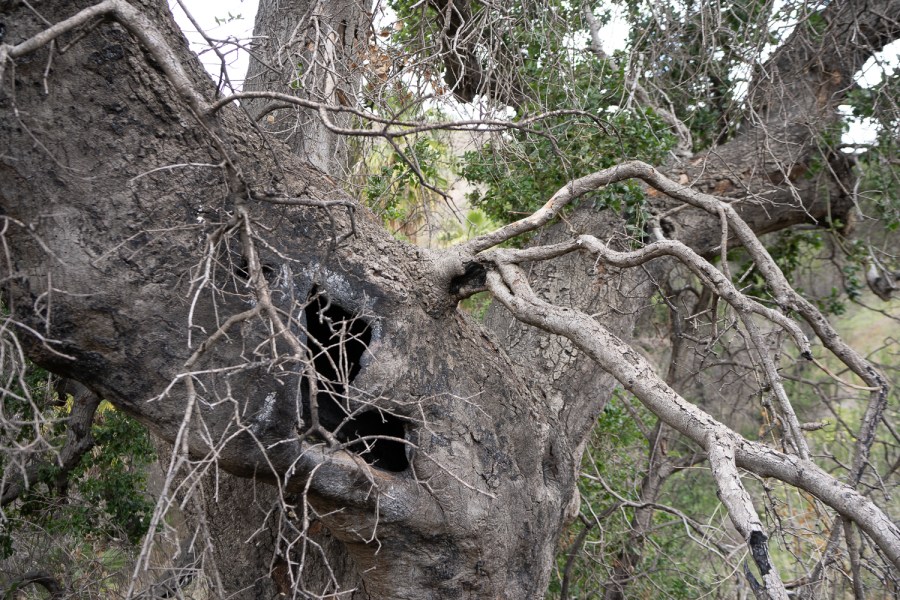A bobcat and her three kittens were found in the cavity of a large oak tree in Thousand Oaks last month, the National Park Service announced Thursday.
The mama bobcat, dubbed B-370, had previously been captured in the Simi Hills and was collared as part of the National Park Service’s study of the big cats’ survival in and around the Santa Monica Mountains. Biologists suspected the bobcat had given birth and so they tracked her down, according to a news release from the park service.
Using GPS and radio telemetry from the cat’s collar, biologists with the Santa Monica Mountains National Recreation Area located B-370 on April 15 in the intensely burned area of the Woolsey Fire, which swept through Calabasas and surrounding areas in November 2018.
The biologists believed the bobcat was “denning” because she repeatedly returned to the same spot, indicating she had likely given birth. But when they arrived on-site, they had trouble finding her den.
“I swear she’s in this tree, but I can’t find her,” biologist Joanne Moriarty recalls saying. “Then I look up into this little tiny hole in the tree, and her face is just poking out at me. Of course, she’s been staring at me the whole time.”
Moriarty used a remote camera held on an extension pole to peek into the tree to confirm the presence of B-370 and her kittens, the park service said in a news release. The biologists then left the area and returned the following day, when the mother was away from her den, presumably hunting.
Using a ladder, they captured the kittens, one by one, and brought them down so that researchers could weigh and measure them, and give them a general health check. The litter contained one female and two males, who were about 30 days old.
The kittens, named B-379, B-380, and B-381, were ear-tagged for future identification purposes, before being returned to their home in the tree cavity.

Moriarty, who has been studying bobcats in the area for 17 years, said the location of the den is strikingly unusual because typically dens are in hollow areas in thick brush or in woodrat nests with large piles of sticks and leaves.
Scientists believe the bobcat used the tree cavity as a den because much of the existing natural habitat in the surrounding area was destroyed in the Woolsey Fire. Little vegetation has since grown there, as the blaze destroyed nearly half of the natural area in the Santa Monica Mountains and about 2/3 of the natural habitat of the Simi Hills, according to the park service.
Bobcat kittens usually stay in their natal den for four to five weeks, according to biologists, then the family will move on to other dens that they use for shorter periods. The mother typically cares for the kittens until they are nine to 11 months old, and then they slowly become independent.
When B-370 was initially captured, biologists noted that she appeared to have nursed in the past. They took hair and tissues samples and fitted her with a radio collar so her movement could be tracked, and then they released her.
Since 1996, biologists with the Santa Monica Mountains National Recreation Area have been studying the ecology and conservation of bobcats in and around the park — which encompasses more than 150,000 acres of mountains and coastline in Ventura and Los Angeles counties — to learn more about how they live in an urban landscape.
L.A. is just one of only two megacities in the world with a population of big cats living in city limits, the other being Mumbai in India.





















